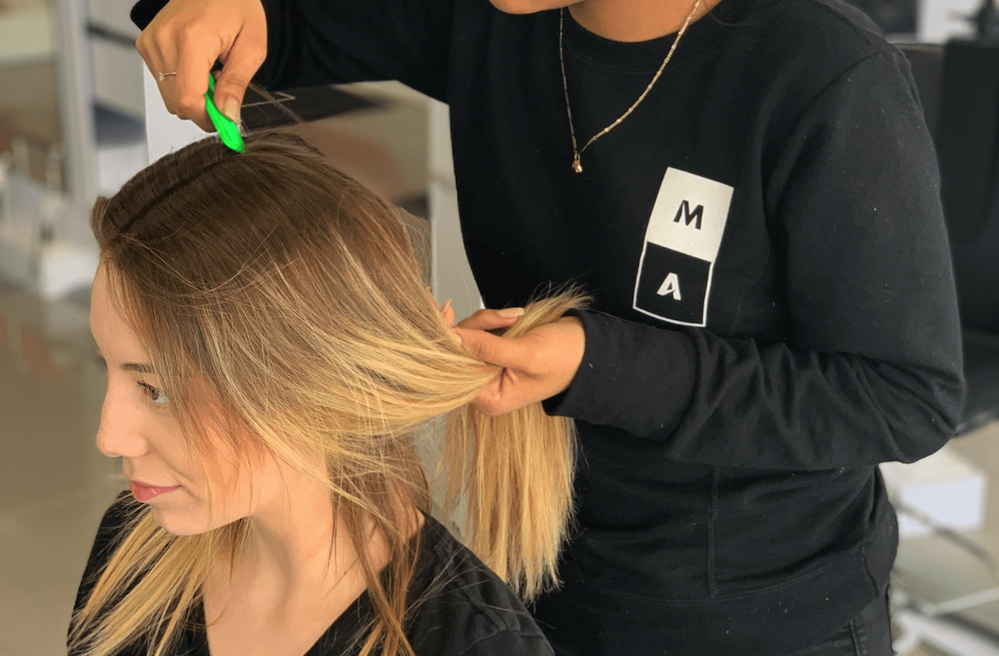
Treating Damaged Hair 101
When products, styling, and treatments weigh down the protective layer around your hair, it can fray, break, and damage from root to tip. Treating damaged hair is an important step in restoring the health and vitality of your luscious locks. Damage can be caused by many things, including excessive heat styling, over-processing with chemicals, and even environmental factors like sun exposure or harsh weather. Fortunately, there are steps you can take to treat damaged hair and restore its health and vitality.
How is Hair Damaged?
The first step in treating damaged hair is to identify the type of damage. If the hair is dry and brittle, it may be lacking moisture. If the hair is limp and lifeless, it may be over-processed and in need of protein. If the hair is dull and lacks shine, it may be damaged by environmental factors like sun exposure. Once you have identified the type of damage, you can choose the right treatment to address the issue.
Hair can be damaged in many ways, including:
- Heat styling: Excessive use of hot tools like blow dryers, curling irons, and flat irons can damage hair by depleting moisture, breaking down the protein structure, and causing split ends.
- Chemical treatments: Chemical treatments like hair dye, bleach, and perms can damage hair by altering its natural structure, weakening the hair shaft, and causing breakage.
- Environmental factors: Exposure to sun, wind, and pollution can cause hair to become dry, brittle, and damaged.
- Over-washing: Washing your hair too frequently or using harsh shampoos can strip the hair of its natural oils, leaving it dry and damaged.
- Over-brushing: Brushing your hair too aggressively or using the wrong type of brush can cause breakage and damage to the hair.
- Poor nutrition: A diet lacking in essential nutrients like protein, vitamins, and minerals can result in weak and brittle hair.
- Medical conditions: Certain medical conditions and treatments like chemotherapy can cause hair to become weak and fall out.
It’s important to note that everyone’s hair is unique, and what may cause damage in one person’s hair may not affect another’s. Additionally, different types of hair require different types of care, so it’s important to understand your hair type and its specific needs in order to keep it healthy and free from damage.

Restoring and Treating Damaged Hair
When treating damaged hair, it’s important to assess the level and extent of the damage and adjust your hair care routine accordingly. Some key steps to treating damaged hair include using deep conditioning treatments and hair masks to restore moisture and nutrients, avoiding excessive heat styling and chemical treatments, eating a healthy diet rich in protein, vitamins, and minerals, protecting your hair from the sun, and using gentle styling techniques and the right hair care products. With consistent and targeted care, you can help to revitalize and restore your hair’s health and beauty. Let’s explore these more closely!
Deep Conditioning
One of the best things you can do to treat damaged hair is to use a deep conditioning treatment. Deep conditioning treatments are designed to penetrate the hair shaft and provide much-needed moisture and nourishment to hair strands and follicles. There are many different types of deep conditioning treatments available, from protein-based treatments to moisturizing treatments that contain oils and butters. Your stylist can help you choose the right treatment for your hair type and level of damage.
Reduce Heat and Chemicals
Another important step in treating damaged hair is to avoid heat styling whenever possible. Excessive heat can further damage already compromised hair, so it’s important to give your hair a break from hot tools like flat irons and blow dryers. If you must use heat styling tools, be sure to use a heat protectant spray to minimize damage. Similarly, chemical treatments like hair dye, bleach, and perms can cause damage to the hair over time. If possible, try to cut back on these treatments or opt for gentler alternatives until your hair has a chance to revitalize and recover.
Make Healthy Lifestyle Choices
In addition to deep conditioning treatments and avoiding heat and chemicals, there are other things you can do to treat damaged hair. Eating a healthy diet that includes plenty of protein and vitamins can help promote healthy hair growth. Foods like eggs, nuts, and leafy greens are particularly beneficial for hair health. Sun exposure can cause damage to the hair, so it’s important to protect your locks with a hat or scarf when spending time in the sun. You can also try using a silk pillowcase to minimize damage while you sleep, and avoid harsh chemicals like sulfates in your hair products.
Learn from the Hair Care Experts
Overall, treating damaged hair requires a multifaceted approach that takes into account the type and level of damage, as well as your individual hair type and needs. At the Mason Anthony School of Cosmetology, we teach our students the importance of assessing each client’s hair to determine the best course of treatment. With the right care and attention, damaged hair can be restored to its natural beauty and health.
Interested in Beauty School?
Consider touring the Mason Anthony School of Cosmetology to see which program is right for you.
We have the largest, best-in-class facility in Ohio and a large student body ready to help you hone your skills and practice your craft.
Call us today!